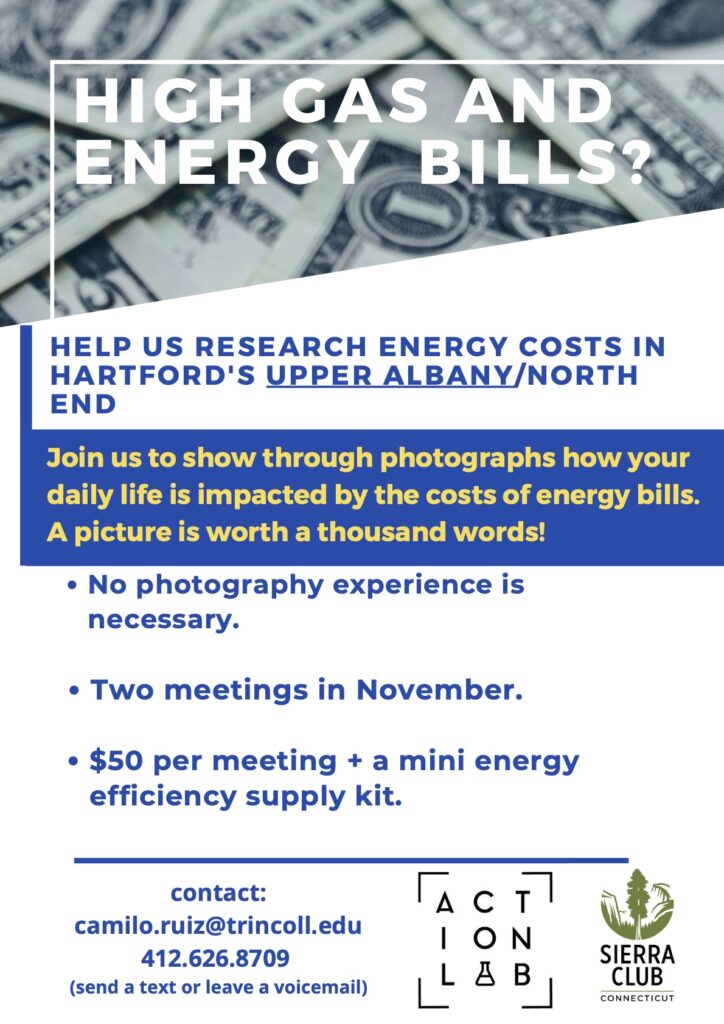PhotoVoice is a community-based participatory research methodology in which community members respond to research questions with photographic images taken by themselves. For this project, we recruited four community photographers. Two were emerging photographers raised, born, and well connected to Hartford, and the other two were amateur photographers, residents of the Afro-Caribbean neighborhood of Upper Albany in North Hartford. Recruitment was made through local activists and sisters Shanelle, Shenice Morris, and Sierra Club referrals. Participants received $100 and an energy-saving kit in compensation for their work.
Photographers responded to the prompt question: How do high costs of electric and gas bills affect your daily life or the life of your community? After meeting with participants and setting up common grounds for the project, we had a group session with three of the four photographers two weeks later. One research team member met through a video call with the other photographer after failing to meet twice due to acts of lethal violence in Upper Albany.
After viewing all the images presented, three photographers clustered the universe of photographs under these five topics, shown here in hierarchical order: sacrifice, lack of, infrastructure/policy, temperature, and interconnectedness.
Sacrifice was the most robust category, and people explained that in dealing with energy burden, sacrifices to reach minimum comfort levels were necessary. They wanted to call attention not only to the number o
The flyer used for the recruitment of community photographers people affected by energy but wanted to highlight how people are affected by it.
Lack of emerged as a category to emphasize how energy burden revealed the vivid lack of care, empathy, support, and infrastructure experienced by photographers and their communities. One participant said that, for example, Upper Albany is notorious for the lack of flowing of abundance.
Infrastructure/policy was a category that photographers created to denote systemic failures perpetrated by energy companies, policies, and landowners, that expose people to detrimental living conditions.
Temperature was a category used to describe the embodied experience of heat in the summer or cold in the winter in people’s homes and bodies.
Interconnectedness tackled the feeling of shared experiences but tied together through a negative experience, or as one of the photographers put it; it is more like “trauma bonding.”
Below the reader will find the images grouped by the author because we wanted to respect the peculiarities of the aesthetics and gaze that each photographer brought to this project. However, we would like to invite the reader to keep in mind the five categories that photographers created to organize the universe of images they captured because they allow to connect them from a level up of analysis.
